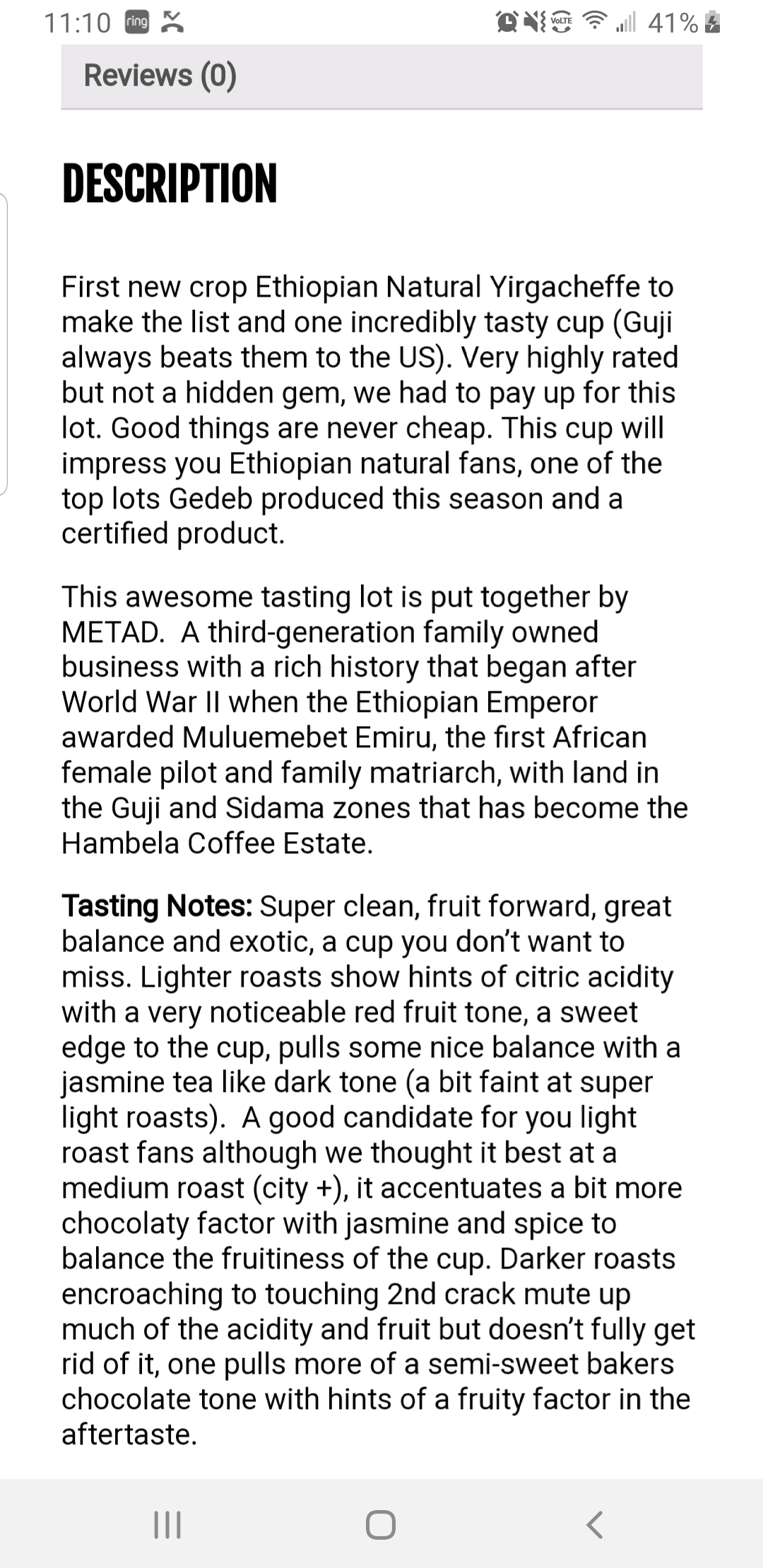We need to have some sharing of roasting tips in here from time to time.
I feel like many of my roasts suffer from too fast drying/yellowing (always less than 4 min for me) and too fast progression, most roasts last less than 10 minutes (1pound charge) with weight loss less than the "experts" say is ideal with many of mine in the 11%-13% range, rarely higher. My roaster tends to lose a few beans inside itself during the roast which is not possible to account for and might skew the weight loss percentages to higher than they truly are (meaning I'm doing worse than what I can calculate). I like to emphasize the light roast flavors especially fruits and any floral components for most coffee but I think I may not be taking my roasts far enough. I rarely buy central or southern american beans anymore, almost only african origin, esp dry process ethiopian. I do record final bean temp, but maybe need to make that a end point marker also rather than as an aside. I've never seen target final bean temp recommendations for what those are worth. I try to shoot of ROR less than 5 when I drop, while attempting to maintain a steadily decreasing ROR. Its hard to achieve, especially near end of roast there is often a bump up, which I think can minimized by steadily lowering heat and airflow throughout the roast, which I am doing, but it is difficult to master.
Curious what others experience is.
TD







































![Craft A Brew - Safale S-04 Dry Yeast - Fermentis - English Ale Dry Yeast - For English and American Ales and Hard Apple Ciders - Ingredients for Home Brewing - Beer Making Supplies - [1 Pack]](https://m.media-amazon.com/images/I/41fVGNh6JfL._SL500_.jpg)










